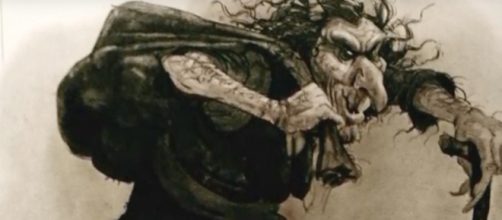Recently, pop culture has seen a resurgence in popularity of the infamous Krampus, a Germanic, goat-headed monster who kidnaps naughty children at Christmas. However, there is one legend still out there that makes him look like Santa Claus. Hailing from the caves in Iceland's hinterlands, Gryla is not one to be trifled with. This Christmas Witch takes terror to a whole new level.
Naughty or nice?
The tale of Gryla the Christmas Witch is not a pleasant one. Descriptions of this monstrous creature vary slightly. Some accounts claim that she has 15 tails, while others say that she has as many as 40 tails.
However, all accounts agree that the Christmas Witch doesn't just kidnap misbehaving children. She tears their stomachs out and makes them into stew.
The earliest written accounts of Iceland's Christmas Witch date back to the 13th-century; however, the legend of Gryla was passed down orally for generations before it was finally written into poems and sagas. Yule, a midwinter celebration and feast, was traditionally celebrated throughout Northern Europe for centuries. The involvement of mythical creatures such as elves, trolls, Krampus, and Gryla was very normal for the time.
The name Gryla translates loosely to "Growler." She resembles the legend of Krampus with her bag that she tosses naughty children into, but she takes things a step further and actually eats the children.
She once had a husband, but she ate him too when he became boring.
Folklore and legends
The Christmas Witch is said to have a second husband who has been described as looking like a troll. She is also associated with a Yule Cat that can and will eat grown men for not wearing new clothes during Yule. This is where the tradition of gifting socks at Christmas came from. Gryla even has children. The 13 Yule Lads are her sons and are often described as being merry and mischievous. They are known for slamming doors and stealing leftovers during holiday celebrations.
In 1746, Iceland banned parents from telling these horrifying stories to their children. However, in recent years Gryla has made appearances in Christmas parades throughout Iceland.
The Christmas Witch was officially tied to the holiday in the early 19th century. Traditionally, she has been more than just a Christmas ghoul. She has always represented the harshness of the winter season to Icelandic people. The threat of glaciers and other winter-related catastrophes are the embodiment of Gryla. She is a matriarchal villain, which seems to make her even more frightening.


